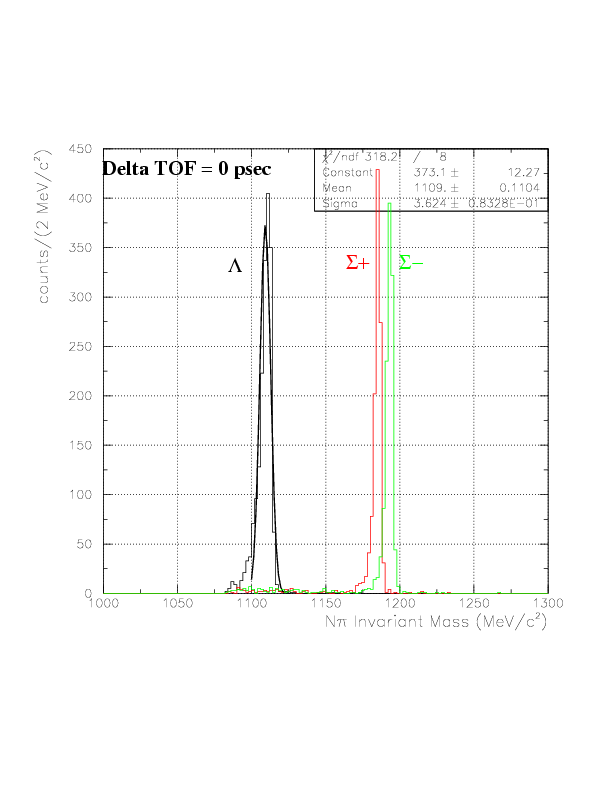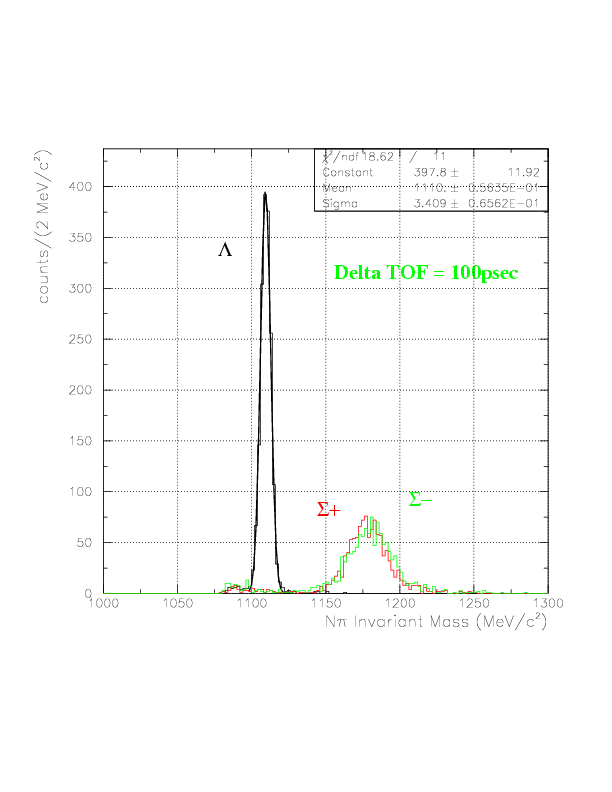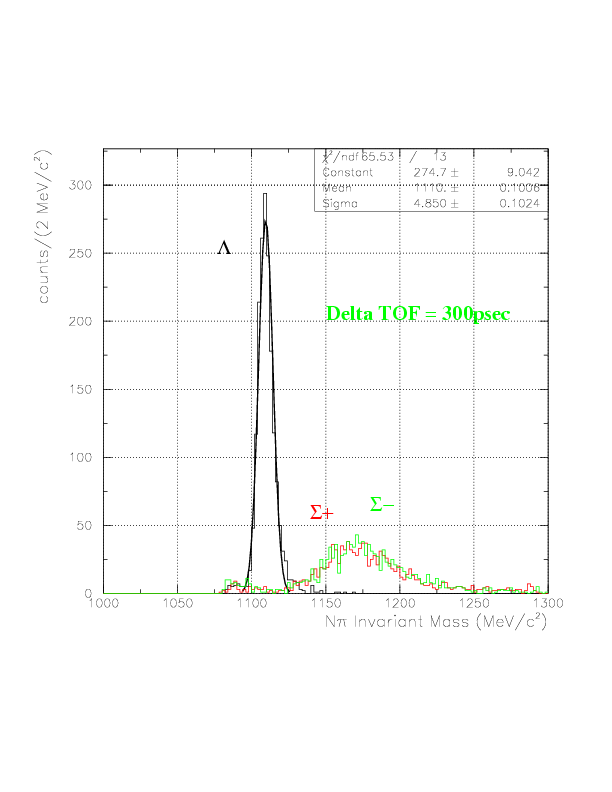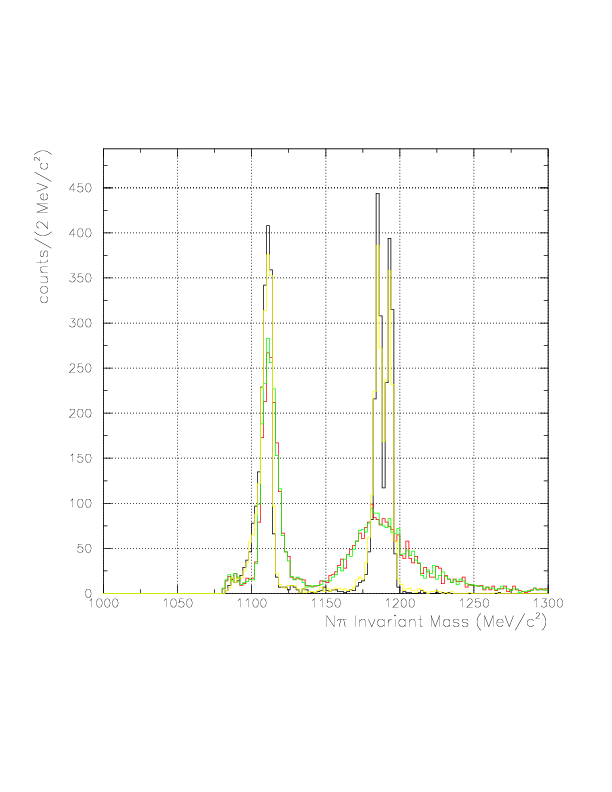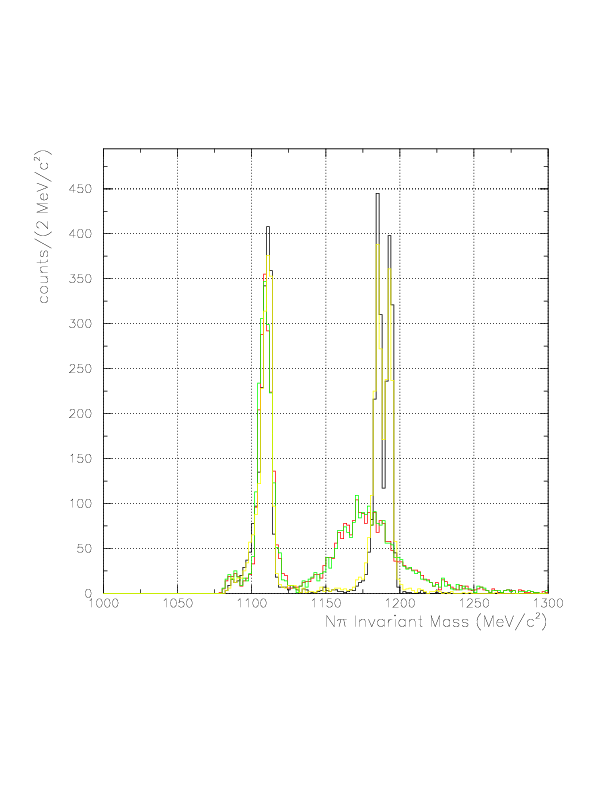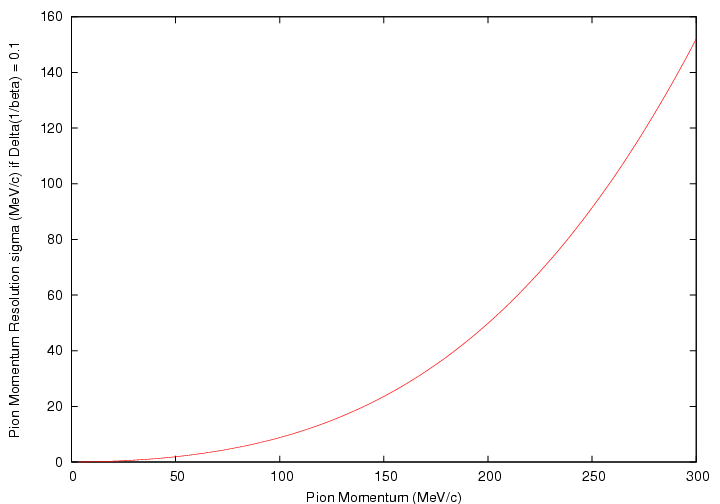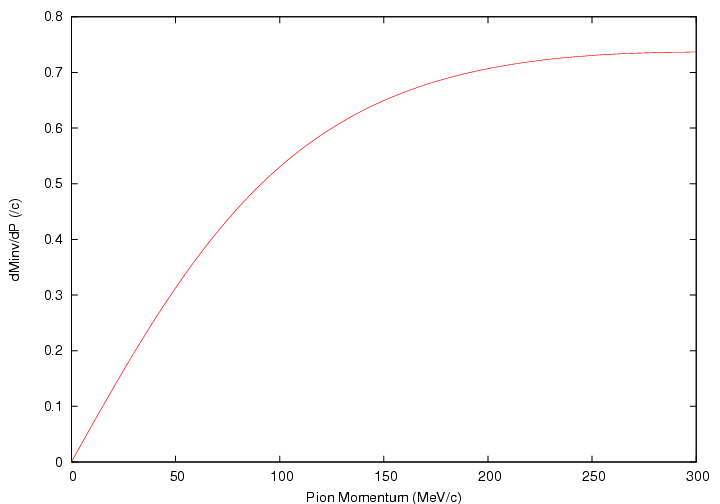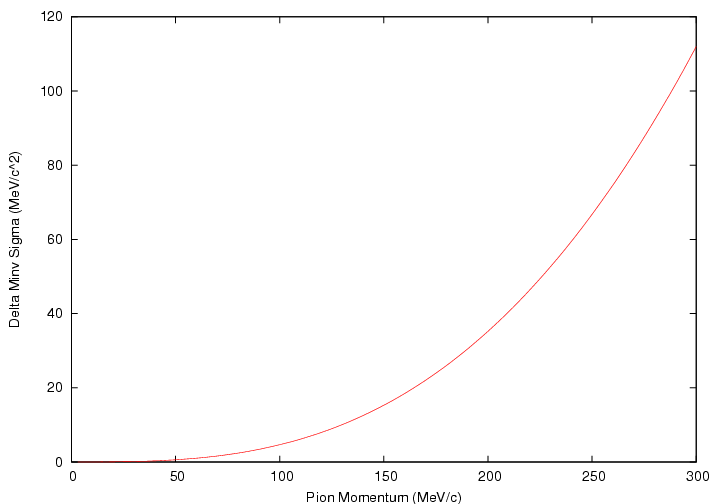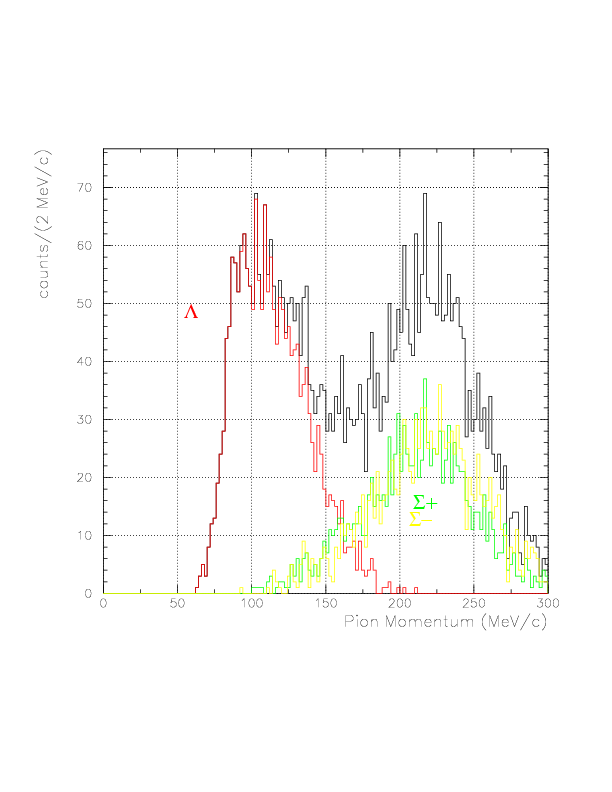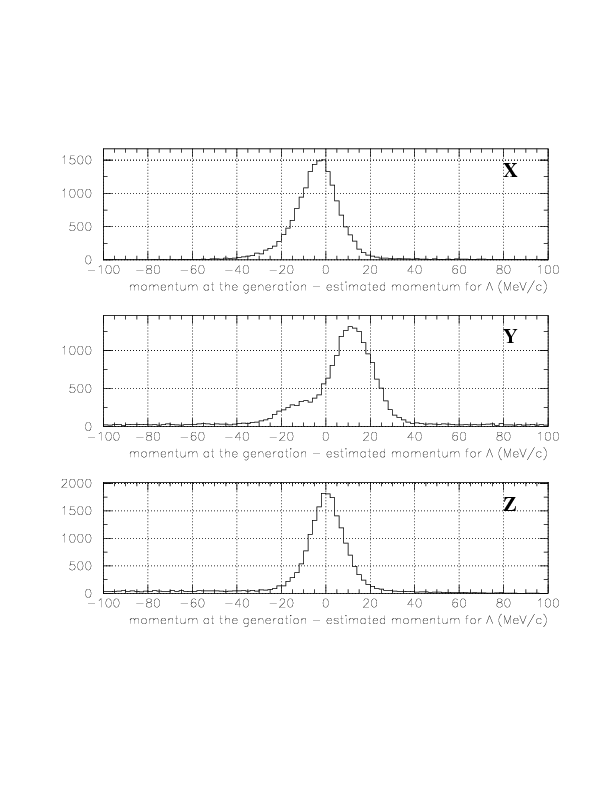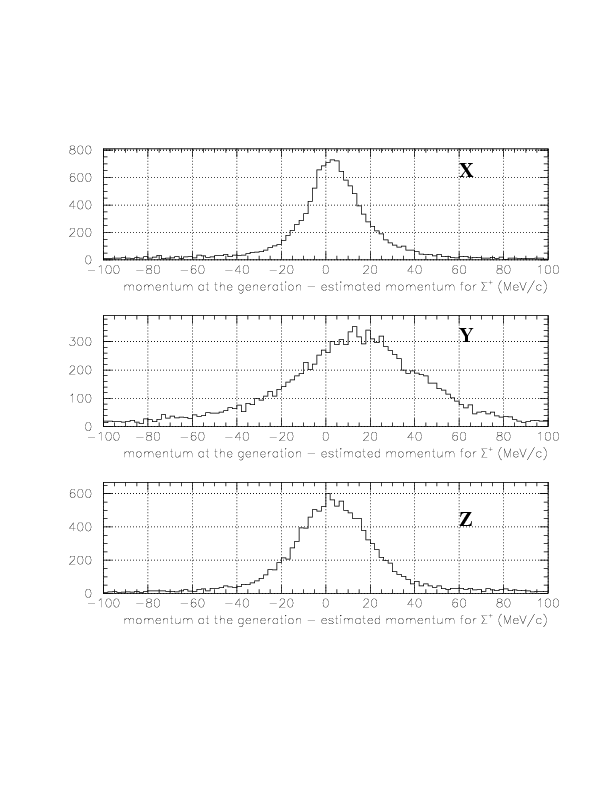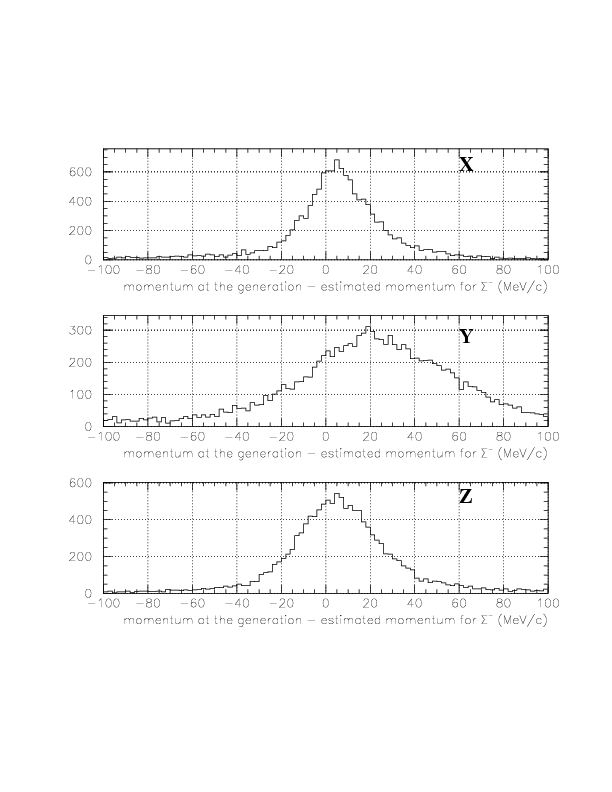&Lambda -> p &pi^-,
&Sigma^+ -> n &pi^+,
and&Sigma^- -> n &pi^-,
assuming a realistic setup and resolution values by GEANT 3.21 . Note that1. A proton (on PA/PB/NT) is detected with finite TOF resolution value, 100psec, then energy-corrected.
2. A neutron (on NT) is detected with finite TOF resolution value, 200psec and x/y/z ambiguities are treated simultaneously.
3. A charged &pi (on TC) is detected with finite TOF resolution value, 200psec, and no energy correction is applied. As the direction vector, detection by VDC is simulated, hence multiple scattering effect is properly taken into account.
| generated hyperon species/production ratio | &Lambda:&Sigma^+:&Sigma^- 2:2:1 |
| generated hyperon momentum range | 180-720 (MeV/c) |
| generated hyperon momentum distribution | uniform |
| generated hyperon angler distribution | uniform on unit sphare i.e. cos&theta and &phi are uniform with no correlation |
| x/y generation point distribution | 4.0 cm sigma Gaussian |
| z generation point distribution | uniform |
| multiple scattering | on(Moliere) |
| energy loss straggling | on(Gauss/Landau/Vavilov) |
| PA time resolution | 60 psec (Gaussian responce) |
| PB time resolution | 80 psec (Gaussian responce) |
| NT time resolution | 200 psec (for neutron, Gaussian responce), which could be interpreted as the T0+KTOF+NT overall time resolution. |
| TC time resolution | 0~300 psec (parameter, Gaussian responce), which colud be interpreted to be re-presenting the overall resolution of the measurement |
| direction cos of proton motion | replaced by the value on PDC(infinite resolution) |
| direction cos of pion motion | replaced by the value on VDC(infinite resolution) |
| detection point x of neutron on NT | represented by the x-central value of the segment |
| detection point y of neutron on NT | real value + 3.0 cm &sigma Gaussian |
| detection point z of neutron on NT | represented by the z-central value of the segment |
| detection point x,z of pion on TC_B | real value |
| vertex resolution | infinite(i.e. Kaon stop point is exact), but hyperon decay point is set to be unknown. |
| software | GEANT 3.21 (+LEPS-g77 for energy loss correction) |
